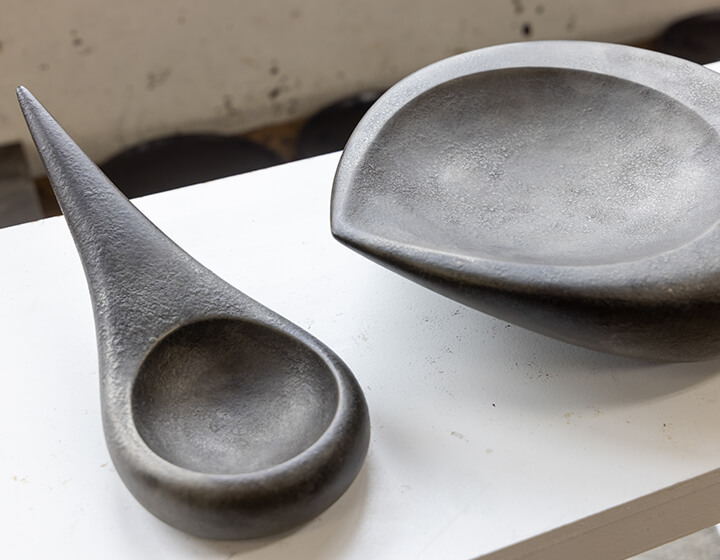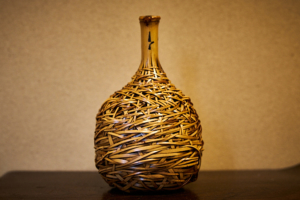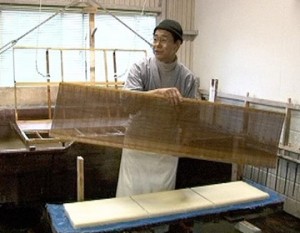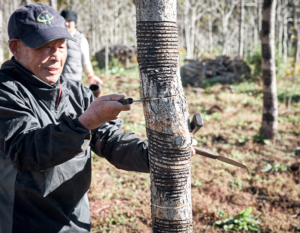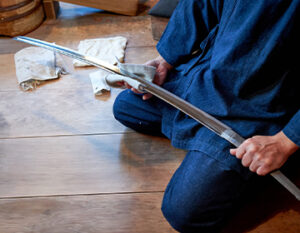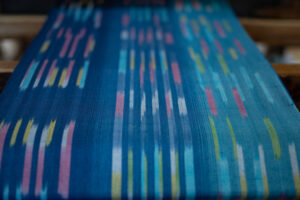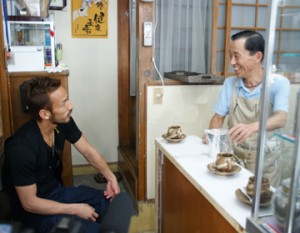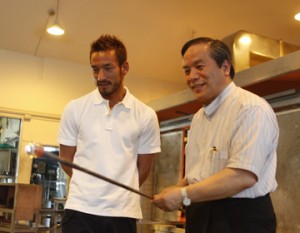History of Niigata Lacquerware
Located in the northern part of Niigata Prefecture and the largest city on the Sea of Japan side of Honshu with a population of 810,000, Niigata City has long flourished as a “port city” and was a port of call for “Kitamae Senpaku” (steamships sailing on the Sea of Japan) from the Edo Period to the Meiji Period. As a result, trade in goods flourished, and cultures from various parts of Japan came in one after another from the sea and land.
One of these cultures was that of lacquerware. It is said that the origin of this culture dates back to the early Edo period, about 400 years ago, when “Noshiro Shunkei,” one of the traditional crafts of present-day Akita Prefecture, was introduced to Japan. It is said that a special area for the sale of lacquerware, called wandana, was established in downtown Furumachi and a policy of protection was adopted, attracting a variety of techniques and craftsmen to this area. In the late Edo period (1603-1868), sales of lacquerware expanded not only to Edo and Osaka, but also to Hokkaido, where it evolved into Niigata lacquerware.
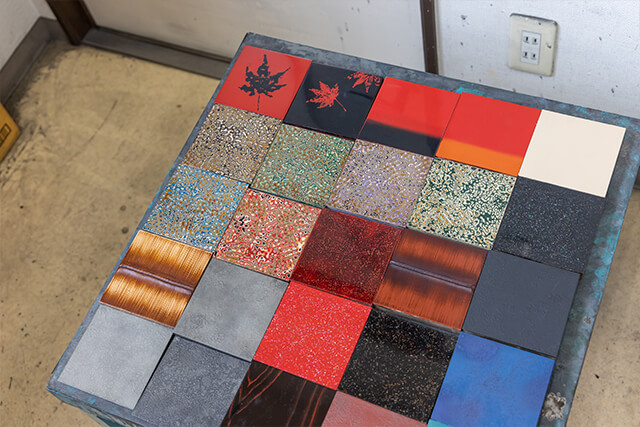
Characteristics of Niigata Lacquerware, a Treasure Trove of Henshi-nuri Lacquerware
Niigata lacquerware is characterized by its rich variety of lacquering techniques, which is called “a treasure house of Kawari-nuri” (variant lacquering). The craftsmen’s playful spirit and passion for expressing something by using only the lacquer technique have given birth to this variety of lacquerware.
For example, one of them is “Take-nuri,” in which the texture of bamboo is expressed not with actual bamboo but with lacquer. Originally developed in the Edo period (1603-1867), this technique became popular when it became fashionable for samurai to have their swords’ sheaths lacquered with bamboo, and the technique spread to other regions. It has since taken root in Niigata and some other regions, and is now a representative technique of Niigata lacquerware. The technique is unique in that it uses rusted lacquer mixed with abrasive powder to create bamboo joints and stripes, and Makomo (straw mat) powder to express a sooty texture.
Other techniques include “ishime-nuri,” which expresses the rough texture of stones, and “nishiki-nuri,” characterized by irregular speckled patterns created by layered lacquering.
Fascinated by the beauty of bamboo lacquerware, he became a Niigata lacquerware craftsman.
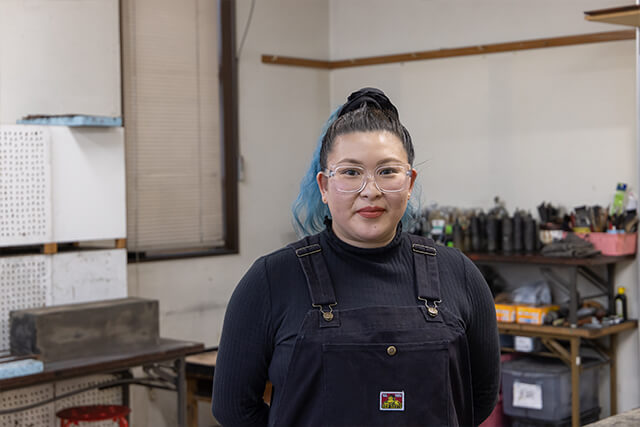
Momoko Sanada, an active Niigata lacquerware artisan, entered the world of bamboo lacquerware at the age of 24, fascinated by the beauty of bamboo lacquerware. Ms. Sanada, who had never been involved in the industry before, recalls her surprise at the fact that bamboo lacquerware was made entirely with lacquer, and her fascination with the beauty of what appeared to be made of bamboo.
He absorbed the techniques at a speed that surprised everyone around him, and he has continued to hone his skills under the tutelage of a lacquer craftsman who is said to be the best in Niigata. He also felt a sense of mission to connect the history of Niigata, the town where he was born and raised, to the future.
Expressing Modernity with Traditional Craftsmanship
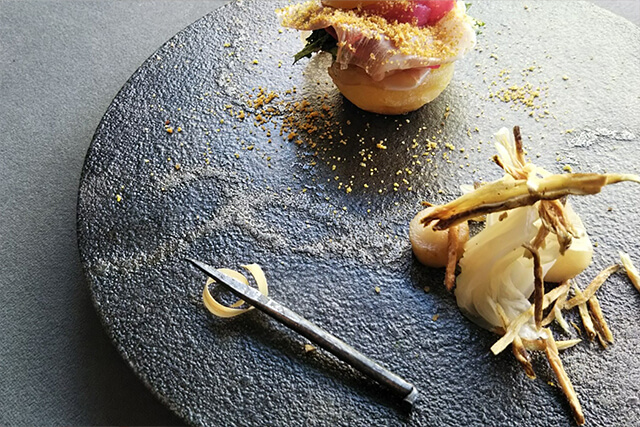
Mr. Sanada’s works have a modernity that rewrites the Japanese image of “traditional crafts. The surfaces are often matte and scratch-resistant, another feature. There are also “Ruri Nuri” (lapis lazuli lacquerware), which resembles lapis lazuli gemstones, and “Beniseki Nuri” (red stone lacquerware), which resembles red stones, and they blend well not only with Japanese cuisine but also with Western cuisine such as Italian and French. They are cool and showcase the potential of the dishes at the table as well.
One of Mr. Sanada’s specialties is “Oborogin-nuri,” or “Oboro Gin-nuri.
This is a reproduction of the Hensen-nuri technique of Shibata Zeshin, a lacquer craftsman of the Edo period, and although it is a wooden product, it has the unique texture of a metal. Shibata Zeshin is widely known for his “Fuji-Tagoura maki-e maki-e frame,” which was exhibited at the Vienna World Exposition in 1873 and won a prize.
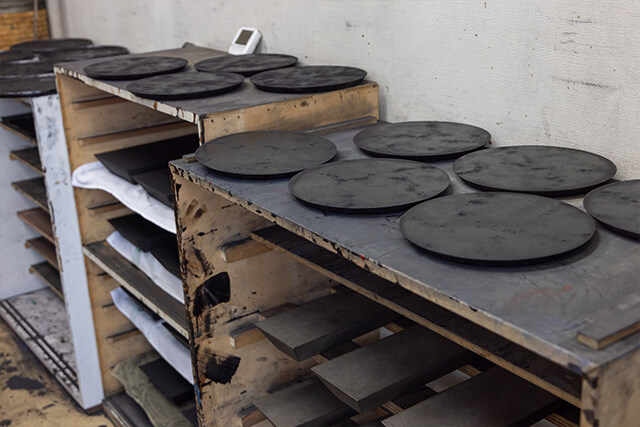
The dark atmosphere and subdued brass color have a cold, antique atmosphere, and the chic old-fashioned look creates a serene beauty. Of course, each piece is made by hand. The process of hardening the wood, dressing with cloth, applying rust, and applying the middle coat of lacquer lasts nearly two months. In the middle stage of the process, charcoal powder is sprinkled to give the piece an uneven appearance, as if it has decayed. Although it is a reissue, the finished product is truly modern and contemporary.
Making Niigata a Famous Lacquerware Production Center
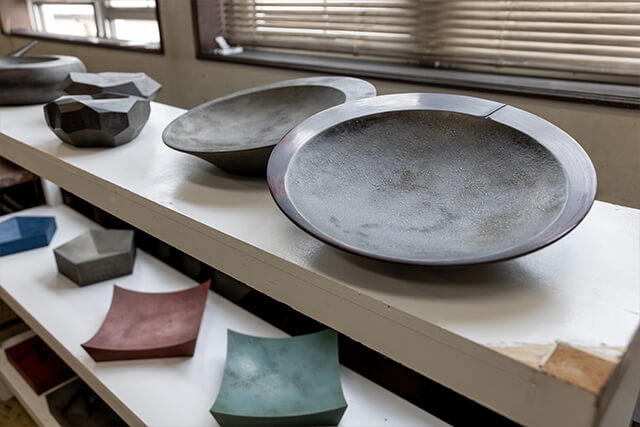
Niigata lacquerware has evolved through the convergence of a wide variety of techniques and the individuality of each craftsman. The history of the association is still young, and the scale of Niigata as a lacquerware production center is not so large. In terms of the retail and wholesale markets, Niigata Lacquerware is not as big as other famous lacquerware production centers. Still, Mr. Sanada smiles and says proudly, “I do this work because I love it. Mr. Sanada’s job is to hone his skills as a craftsman and to thoroughly pursue his own unique line of “hen-nuri. He now offers his techniques on a completely custom-made basis, mainly to restaurants. He creates new items one after another based on the restaurant’s image of the food to be served and his imagination to make it stand out. He receives many orders from the Tokyo metropolitan area and overseas, and sometimes has to wait six months or more for delivery.
It has been about 10 years since Mr. Sanada entered the world of lacquerware. At first, he was selfless in his pursuit of “making beautiful things. Now, he continues to be motivated by new challenges.
I am a burly craftsman, a product-maker. Now I enjoy thinking of new coatings. From now on, for example, I want to use a 3D printer to try my hand at something resinous, or even something copper-like.” says Mr. Sanada.
The day may not be far off when Niigata Lacquerware will be talked about around the world as a famous lacquerware production area.



